The widely predicted outcome of Nicola Shaw’s report into the future shape and financing of Network Rail was always going to raise serious issues for the UK’s embattled rail freight sector.
Published in March (RAIL 797), there’s little doubt that the report’s headline-grabbing call for greater devolution and autonomy on a route level will need fleshing out substantially, if it is to be reconciled with a sector that has little alignment with geographic boundaries.
Critics will always point to the inherent risk posed to long-distance freight services and other nationwide operators by any dilution of NR’s central control functions.
Retaining a non-devolved national system operator to negotiate paths and possessions with newly empowered routes was therefore always going to be part of any sensible recommendations.
The end result for those with their glasses half full is an efficient and growing railway made more accountable to its users, bolstered by the influx of private capital.
Freight operating companies, still reeling from a precipitate loss of coal and steel traffic in the past 18 months, should draw encouragement from the safeguards put in place for the sector by Shaw. So says Rail Freight Group Executive Director Maggie Simpson, who believes the safeguards are sorely needed by an industry that is carrying 14% less freight than in did 12 months ago, according to office of Rail and Road statistics.
Any recommendations accepted by the Government are likely to be implemented in time for the start of Control Period 6 (April 2019), meaning that - in the short term at least - the devil will be in the detail.
“Devolution is quite difficult for freight, because we go everywhere,” says Simpson. “If you come out of Felixstowe on the cross-country route and then go to Scotland, you go over four different routes. And you need all those routes to be aligned and looking after you, so devolution is a bit uncomfortable.
“The direction of travel around Shaw is for more of that. And in terms of implementation, the detail of how you would manage cross-boundary operators needs to be worked out. You can say ‘devolution’, but what does it actually mean?
“I think the Shaw Report is actually very good for freight. Arguably there has never been a government report into the railways that has had such an emphasis on freight. It got two things right: it gave a lot of importance to having freight routes with equivalent status to the other routes, and generally I think Shaw recognised in the models she was proposing that you have to make sure freight is properly looked after.”
Reassuringly for Simpson and the freight operators that the RFG represents, the report fully acknowledges that some functions would not be appropriate to devolve to route level. It proposes that health and safety, maintaining standards and timetabling are among the functions that should be kept firmly in the centre.
Another accommodation for freight appears to be in the establishment of a new virtual freight route, with equal standing to NR’s other geographic routes in terms of autonomy and policy setting.
However, with so many unanswered questions over the implementation and regulation of disparate parts of what remains (ostensibly) a single national network, the Shaw Report should be viewed in its wider context rather than focusing on the minutiae. It’s far more about the destination than the journey, adds Simpson.
“The rhetoric around having a strong freight route is hugely powerful. What that means in practice remains to be seen, but it gives us the strongest possible footing to do that,” she says.
“There’s also a recommendation to continue system operation, and that should be at the centre to be effective, which is also welcome.
“There are a lot of details which are not in the Report, but I didn’t necessarily think there would be. I didn’t expect Annex A to say precisely how a system operator would work, and it would have been beyond what I expected Shaw to do. But she categorically says there should be a strong central system operator and controlled timetabling.
“We have to work out what it all means, but the fact she has said these things is affirmative because there were other models out there that didn’t have them, which other people were talking about.
“That is the direction of travel, and it could have set a very different one.”
Although broadly optimistic of the trajectory Shaw has set for a decentralised railway, Simpson reserves some scepticism for Shaw’s much publicised recommendation to introduce private capital and investment in infrastructure. While ruling out wholesale privatisation or selling off assets, the report alludes to route-based concessions that would keep infrastructure in public hands, but allow private concerns to operate, maintain and renew assets for a fixed period (of perhaps 20 to 30 years).
Opening up extra income streams from letting assets would seem to be a no-brainer for NR in the current financial climate, but concrete proposals for how third parties would profit from such an arrangement are seriously lacking.
“If you have £50 million, why would you want to spend it on the railway?” adds Simpson. “That’s the question you’ve got to ask. The railways aren’t a charity, so if someone puts money in they’re going to want something back, which is where it starts to get quite difficult.
“A local authority might invest for non-cash regional benefits, but a global investor is more likely to ask: ‘where’s my return?’ and ‘what’s the tariff I can get for every extra train that uses it?’. That’s very difficult for freight because under the access charge scheme we only have to pay a mark-up if we can afford to do so.
“The Shaw Report mentions a potential concession on the Essex Thameslink franchise to renew the signalling. But if that increases capacity, which trains pay? Is it just the c2c passenger trains that pay more? If we run an extra freight train does that service pay more? And if that train paid more just because it tipped the balance and a pre-existing service pays less, it’s probably anti-competitive, so how are we going to deal with those things?”
Simpson believes that to hold up High Speed 1 as an exemplar of a scalable concession model (as the report does) is problematic, because of the line’s relatively young age compared with the rest of the network. A further problem arises in that most historical examples of private sector investment in freight-only infrastructure do not fit easily into Shaw’s definition of third party investment.
Incentivising ports and rail-connected distribution centres to increase capacity by investing in infrastructure on their own land will remain difficult if NR chooses to prioritise concessionary arrangements on the assets it holds itself. Effectively, this puts a brake on other privately led schemes to increase freight, says Simpson.
“If I take a recent example, we’ve had ports that have spent very significant amounts on rail infrastructure within their port estates. That isn’t what Nicola Shaw means by third party investment in the railway yet that action will mean that freight trains can leave the port longer, for example. Longer trains mean more goods on fewer trains. That’s third party investment delivering capacity on the network, but it doesn’t get banked because it is not building tracks, sleepers and signalling.
“So, if we’re prepared to prioritise investments according to third party contribution, if we want to lengthen a freight loop because that will enable a longer freight train to run, and someone’s built a new port terminal that links to that, does that count? Or does it only count if they chuck in some cash to the loop? There are a lot of things that have to be sorted through for what it means, and what prioritising according to that means.
“Brand new infrastructure doesn’t need any major investment for some time. It doesn’t need any enhancement, and traffic levels are fairly stable, so you can run a concession that leaves everything the same for 35 years and returns cash straight to an investor. If we take HS1 as the only example we have of a concession, I persistently struggle to see other parts of the network characterised in the same way.
“I’m not saying we should stand still, but if you think about the detail of what a concession is, in order to get a concession that’s good you have to answer those questions.”
Away from disseminating the contents of the 130-page Shaw Report and its implications for rail freight, the minds of senior management teams at the freight operating companies (FOCs) will be focused on the replacement of large volumes lost to the shrinkage of the coal market.
According to the Office of Rail and Road, the amount of coal carried in Q3 2015/16 was 43.9% less than in the corresponding three-month period in the previous year.
In Scotland the volume of coal carried is predicted to drop from two million tonnes to 0.5 million tonnes annually within the next five years. The end of all indigenous production of coal following the closure of Kellingley Colliery in December 2015, and an accelerated programme of bringing coal-fired power stations offline, sparked a disastrous decline in volume that had been impossible to anticipate in its pace and scale.
Simpson calls this the “cliff edge”, but standing firmly by the age-old maxim that necessity is the mother of invention, she is confident that there are ample opportunities to pick up new business. This will provide the added bonus of offering a broader range of income streams, reducing the freight sector’s exposure to a similar catastrophic contraction in output from a single source.
“Nobody expected we’d be carrying coal in 2030 - what’s shaken the market is the rate of that decline,” she says.
“If you look at what it means for an FOC, you would be looking at issues like how long do you have your wagons on-lease? How many drivers are you planning to recruit? And that was done against a profile of a less dramatic decline. Of course people knew that coal was going to go away, but they’d planned on a decline to 2020 rather than the cliff edge that we’ve seen.
“You can’t begin to underestimate the impact that’s having on the FOCs’ business, by holding resources that are still on-lease but not being used. Any business that loses its customers overnight is going to feel that pinch.
“But it’s not just about that, it’s what you do about it. There’s no point looking back - you have to look forwards and work out what you’re going to do about it. It’s for each individual FOC to decide how they’re going to play that card, and they’ll take different business strategies in how they’re going to do that.
“And it is causing people to start thinking about things they wouldn’t have thought about before - collaboration, technology and joint ventures.”
Facing the parallel threats of a freeze in road duty for road hauliers and of freight flows lost to alternative modes of transport as a result of the disruption caused to cross-Channel rail services by the ongoing migrant crisis at Calais, Simpson identifies the intermodal, automotive and construction sectors as the most promising areas for rail to increase market penetration.
But her message to those who hoped biomass would emerge as a like-for-like alternative to coal is that the transport of the material to newly converted coal-fired power stations will not yield great riches in the longer term.
She explains: “If the big generators are going to burn biomass, they will have to go by rail - they won’t have a choice. The question is: will there be any big generation from biomass other than what we have now? Will Drax convert any more units? We don’t know the answer to that. Will more of the big generators switch over to biomass? It’s looking unlikely. There is some growth in that market, but it’s capped. It will be nothing like coal.
“There isn’t a huge untapped sector that looks like coal, so we can’t say ‘we’re not going to move coal anymore but we are going to move this’. What we have to do is build up a whole range of different sectors and have a more diverse market.
“There is distinct growth to be had in deep sea intermodal, particularly with ports such as Liverpool and Tees coming on stream, and retail intermodal we’re hardly touching. The construction market is growing year on year, and there are infrastructure projects coming such as HS2 and new nuclear power stations. There is a quiet transformation going on in the market from ancient old hoppers to new wagons, new terminals and longer trains, and this is all going on below the radar.
“Retail intermodal is a difficult one to crack as you need warehousing in the right places, but that’s beginning to come through the planning system. Daventry is through, Kegworth is through , places like Slough are in the planning system, and those sorts of facilities will help get retailers on board by making the economics much better.
“We had an event for automotives earlier in the year. I think it’s probably the first time we’ve ever had the automotive manufacturers and the rail people all together in a forum like that, and it was quite enlightening. There was a lot of misconception about what the auto-logistic sector were after and what rail could do. We export over a million cars and we import two million… and we hardly touch them. I think it’s just 10%.”
What about the mooted plan to add high-value goods to Class 43 HST services (RAIL 794), or even converting HSTs sent off-lease to freight-only by the end of the decade, as Virgin Trains East Coast and Great Western Railway displace them with Hitachi IEPs?
Simpson replies that high-speed inter-city freight is unlikely to be the silver bullet needed to transform the fortunes of the freight sector. However, making greater use of city centre railway stations is likely to emerge, as legislation becomes tighter on urban air pollution.
“Is premium parcels or retail goods on HSTs a legitimate business for people to be looking at? Of course it is. If you take city centre freight, there isn’t an answer. They don’t want HGVs in an urban space, certainly in the daytime, and if you want to bring them in during nighttime you are up against a whole host of noise restrictions, all there for good reasons so people can sleep.
“London has a population of eight million, who all eat and wear socks, so you have to get the deliveries in - there isn’t a magic bullet to that. If you want to get serious about emissions you’re probably talking about electric vehicles, which have range constraints. So surely having distribution hubs in railway stations that are right in the heart of cities has to be a good thing.
“There are 250 convenience stories within a five-mile radius of Euston station and every one of those gets its delivery off a truck - as does every one of the retail units at Euston. There’s a massive loading bay out the back, and think about how much more concourse you could have if you didn’t have that. So there’s something there, and a market to be had.
“Air quality pressures are going to drive things. We must position ourselves as part of a solution to try and make sure we are aligned with where the trends are going.”
Looking back at what was arguably a year that most freight operators would rather forget, Simpson believes there were still some shafts of light piercing the storm clouds of 2015. In statistical terms, not everything slid the wrong way, with the sector continuing to make great strides in efficiency.
Pathing remains a perennial problem for freight operators, but that could be ameliorated by investment in boosting capacity. Perhaps that’s where Shaw comes in.
Says Simpson: “I think 2015 is the toughest year the FOCs will have ever had, but it’s important to remember that an awful lot of things shifted in a positive way.
“Freight performance is in as good a place as it has ever been, and not just in its regulated targets. If you look at right-time departures out of terminals and arrivals into terminals, all of those are going in the right way. Retention of unused paths - 2,000 or so were given back, and although most were bits of paths, nonetheless they came back into the market. 80% of goods now go on two-thirds of the trains.
“All those metrics go the right way, and the next one we have to tackle is efficiency of paths on the network. How can we send trains back round quicker and get asset utilisation up?
“Some of the Drax biomass trains take four hours to travel 35 miles from Liverpool, which you can do in 35 minutes in your car. If you look at the cost of those wagons, if they were doing it in half the time you wouldn’t have had to spend so much on your wagons. Then there are the drivers. And every time you’re looped it costs 46 litres of fuel on average, which is not an inconsiderable amount of money.
“So there are a lot of things that if you want to be more competitive, you have to be able to do. You can’t make the economics work if the paths you get are too lousy.
“Take London - the amount of containerised goods that come in is quite minimal, but a lot of the goods that end up in London have come on a train from Felixstowe via London, up to the Midlands and then back on a truck. So why aren’t they coming back on a train - there’s enough consumption in London for them to come back on the train? Or why aren’t they coming from Felixstowe direct in the first place?
“The answer is if you could get that path in half the time you’d make the economics work, and then you’d be able to serve London by rail more effectively.”
As for High Speed 2, well that’s another story, grins Simpson. It has been an exhaustive time for rail freight, and the sector has more than enough on its plate… for now.
- This feature was published in RAIL 799 on April 27 2016.


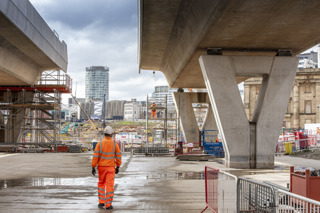
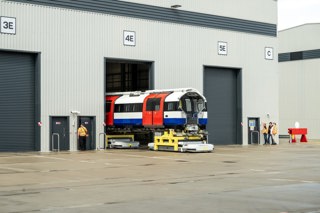
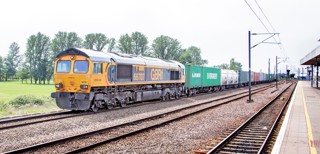
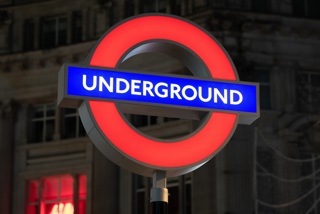



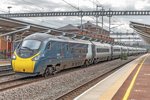








Login to comment
Comments
No comments have been made yet.